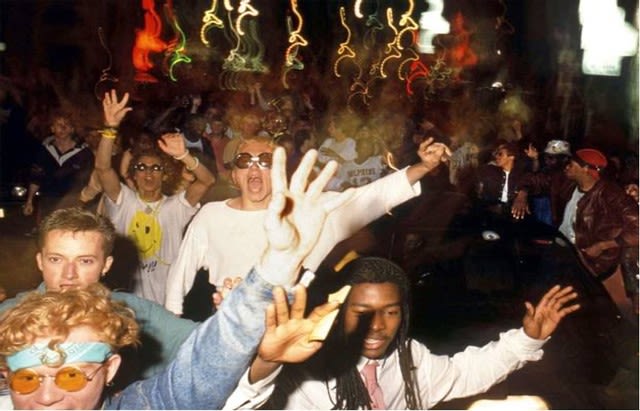Acid house and rave: exploring subcultures with Dr Ray Kinsella

- Written byCarys Thomas
- Published date 22 February 2022

Dr Ray Kinsella, associate lecturer at Central Saint Martins, tells us about the first time he heard acid house in 1988 and discusses the impact the acid house and rave subculture had on him.
Ray’s PhD in 2020 broke new ground in its approach to research about the post-war bebop scene in London’s Soho between 1945 and 1950. Ray currently runs our Subcultures Today and Tomorrow Webinar with Kevin Quinn, a PhD researcher at Central Saint Martins. The online webinar looks at the residual power and value of British subcultures almost 80 years after their inception.
“I remember the first time I heard acid house. It was 1988. We were listening to the London Pirate radio station LWR when suddenly the music bled all over the airwaves. I’d never heard anything like it before; repetitive, tribal beats with a squelchy trippy synthesiser sound laid over the top.
Rumours were spreading fast throughout our estate that Camden Palace had begun incorporating the music into its programme on Friday nights. Exciting. So we made our way briskly up there. After queuing up and a quick search on the door we entered the club and headed vigorously down the staircase to the dancefloor and saw the older kids we knew. Some of them were wearing these paisley waistcoats, they had bandanas on and some had tee shirts with smiley faces splashed across the front. Others were wearing these little round John Lennon-style sunglasses. Their fashion sense had changed overnight and their energy was palpable. They were all smiles and hugs.
Everyone waited apprehensively for the last hour then suddenly .... boom!!! The music changed from soul to house. Those unmistakable underground beats thundered out of the speakers while the acid line crackled over the top and filled the dancefloor. Those in the know started doing this new dance, jacking their bodies in a frenzied youthful manner. It was pure hedonism.
At 2am they pulled the plug and kicked us all out. Outside the pavement throbbed with stories about all-night parties that were going on all over London in abandoned buildings. London was much different then. It was edgy and rough and large swathes of the city were derelict. We jumped in a cab and headed over to the Isle of Dogs. We had no clue where the party was, we just got the cab driver to drive around Limehouse and the docks until we found it.
Suddenly we drove down a side street off East India Dock Road and saw a strobe light flashing in a window of a warehouse. As we pulled up there were two police cars outside with the windscreen and side windows smashed-in. We jumped out of the cab and scrambled to the door of the warehouse. We gave the security a fiver and we were in. It was pure madness. There were about 1000 people in this rave all going nuts. All hugging each other while the acid beats boomed out of the sound system. They were black, white, girls, boys, gay, straight but no one seemed to care about any of that. We looked at each other and smiled. We’d never seen anything like it. London, or at least the London we knew, had changed from being this violent, vicious place literally overnight, and now everyone had come together in unity and were all loved-up. We were hooked. It changed our lives.”
Favourite subculture?
“It’s got to be acid house and rave, simply because those scenes defined my youth. However, my PhD research was about the bebop jazz scene in London’s Soho after World War Two. It was an area that, up until I did it, had remained unresearched. What I loved about the research was when I started finding archival material I could see that it was similar to the acid house scene that came 40 years later. It began secretly in sweaty, burnt out buildings in Soho with only a few hundred people in the know. By 1950 it had spread all over Britain and the Soho clubs were, like acid house parties, raided by police and closed down.”
Read our guide on the Top 8 British Youth Subcultures to find out more about how subcultures continue to offer an outlet for creative expression.
The Subcultures Today and Tomorrow Webinar will explore how subcultures exist, survive and thrive in online spaces and how ‘alternative’ identities are performed and represented. The webinar is suitable for anyone with an interest in the history of British youth subcultures.
You may also be interested in our Subcultures and the Resetting of the Cultural Clock Webinar. This inspiring webinar explores the emergence of the Soho bebop scene and looks at how its growth instigated a moral panic that fuelled police intervention.
Take a look at our upcoming short courses to find out more about the webinars and discover our other short courses.